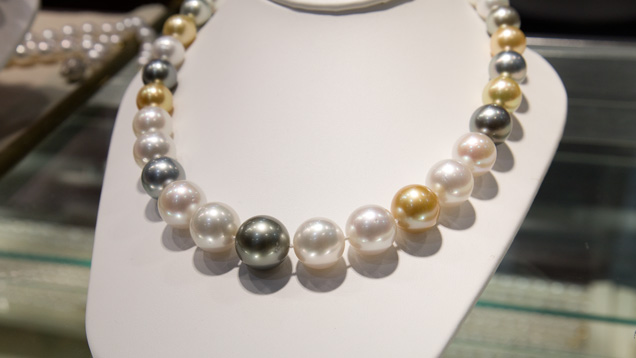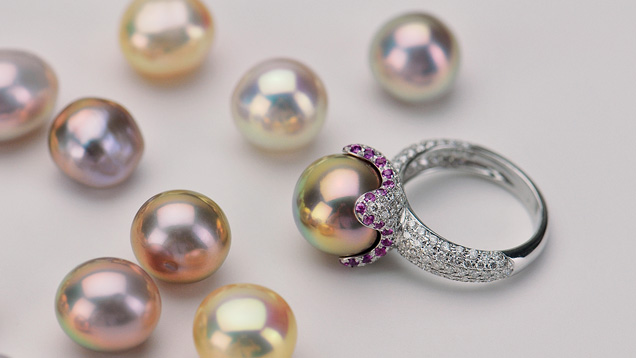Pearl

From those ancient times until the discovery of the New World in 1492, some of the outstanding sources of natural pearls were the Persian Gulf, the waters of Ceylon (now Sri Lanka), Chinese rivers and lakes, and the rivers of Europe.
During Christopher Columbus’s third (1498) and fourth (1502) voyages to the New World, he repeatedly encountered native people adorned with natural pearls. His discovery of natural pearl sources in the waters of present-day Venezuela and Panama intensified demand in Europe. However, within a hundred years, these natural pearl sources had declined due to overfishing, pearl culturing, plastic buttons, and oil drilling.
The first steps toward pearl culturing occurred hundreds of years ago in China, and Japanese pioneers successfully produced whole cultured pearls around the beginning of the twentieth century. These became commercially important in the 1920s (about the same time natural pearl production began to decline). From the 1930s through the 1980s, pearl culturing diversified and spread to various countries around the world.
Pearls are treasures from the Earth’s ponds, lakes, seas, and oceans, and they’ve always embodied the mystery, power, and life-sustaining nature of water.
The spherical shape of some pearls led many cultures to associate this gem with the moon. In ancient China, pearls were believed to guarantee protection from fire and fire-breathing dragons. In Europe, they symbolized modesty, chastity, and purity.
 Perhaps the best-loved gems of all time, pearls—both natural and modern cultured pearls—occur in a wide variety of colors. The most familiar colors are white and cream (a light yellowish brown). Black, gray, and silver are also fairly common, but the palette of pearl colors extends to every hue. The main color, or bodycolor, is often modified by additional colors called overtones, which are typically pink (sometimes called rosé), green, purple, or blue. Some pearls also show the iridescent phenomenon known as orient.
Perhaps the best-loved gems of all time, pearls—both natural and modern cultured pearls—occur in a wide variety of colors. The most familiar colors are white and cream (a light yellowish brown). Black, gray, and silver are also fairly common, but the palette of pearl colors extends to every hue. The main color, or bodycolor, is often modified by additional colors called overtones, which are typically pink (sometimes called rosé), green, purple, or blue. Some pearls also show the iridescent phenomenon known as orient.Cultured pearls are popular for bead necklaces and bracelets, or mounted in solitaires, pairs, or clusters for use in earrings, rings, and pendants. Larger pearls with unusual shapes are popular with creative jewelry designers.
Natural pearls form in the bodies, or mantle tissue, of certain mollusks, usually around a microscopic irritant, and always without human help of any kind.
The growth of cultured pearls requires human intervention and care. Today, most of the mollusks used in the culturing process are raised specifically for that purpose, although some wild mollusks are still collected and used.
There are four major types of cultured whole pearls:
- Akoya—This type is most familiar to many jewelry customers. Japan and China both produce saltwater akoya cultured pearls.
- South Sea—Australia, Indonesia, and the Philippines are leading sources of these saltwater cultured pearls.
- Tahitian—Cultivated primarily around the islands of French Polynesia (the most familiar of these is Tahiti), these saltwater cultured pearls usually range from white to black.
- Freshwater—These are usually cultured in freshwater lakes and ponds. They’re produced in a wide range of sizes, shapes, and colors. China and the US are the leading sources.
Get in touch with one of our experts by clicking here to get help and advice on choosing and designing a piece of jewellery with this gemstone.
 03 9642 3649
03 9642 3649 
